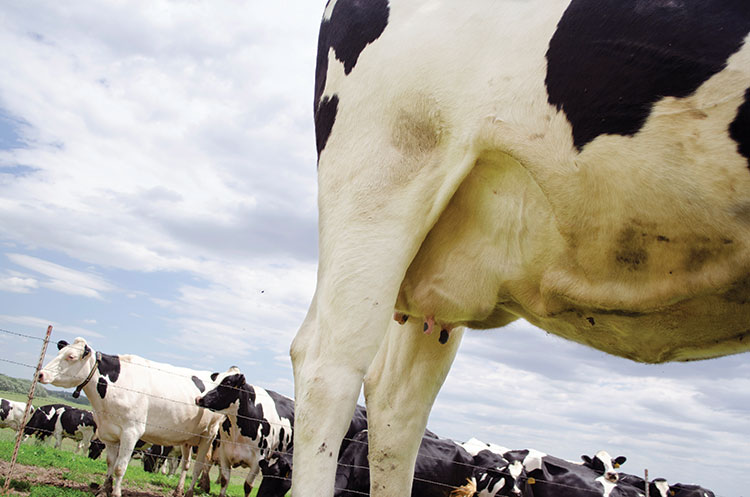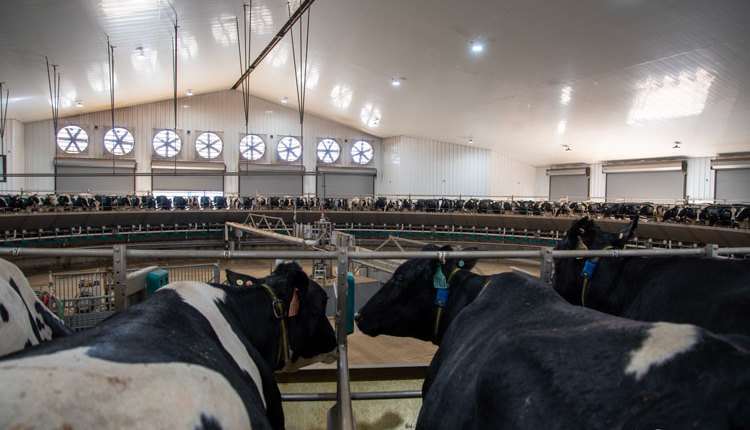The author is a vet who runs UdderWise-Global Mastitis Solutions, United Kingdom. To learn more about the author, visit his website at www.udderwise.co.uk.

Andrew was telling me that he now only treats around 20 percent of cows with dry cow antibiotics. He just wished that he made the move to selective dry cow treatment sooner. He admitted that he was initially concerned about dropping blanket dry cow therapy.
Andrew sees no difference in his herd’s somatic cell count (SCC) or incidence of clinical mastitis, but more importantly, he sees a savings in dry cow tubes and he knows that it’s the right thing to do. There is no justification to use antibiotics in healthy animals or people, and in most European countries, you now can’t use antibiotics to prevent disease.
One big switch
It’s just over three years since the largest milk buyer in the United Kingdom started to move all of its milk suppliers from blanket to selective dry cow therapy. It has been an interesting journey, and to be truthful, at the outset, farmers were more open to this idea than many veterinarians. Veterinarians were afraid of things going wrong and the consequences that might occur.
Farmers have adapted well, with the greatest majority making the move easily and seeing a range of benefits. A gentle approach was taken, starting off by explaining all about selective dry cow therapy and how to make it work successfully. As always, there were the early adopters who were then followed by the majority of farmers.
It’s now common practice.
Blanket dry cow therapy was originally recommended as part of the famous “Five Point Mastitis Plan” to reduce cell counts. At that time in the late 1970s, the average somatic cell counts (SCC) were well over 500,000 per milliliter (mL) and subclinical mastitis was widespread. It also was promoted to help prevent new infections in the dry period.
Now cell counts are much lower; the U.S. averages 180,000 per mL, which is the same as the UK and many other countries. Milk buyers pay less for high cell count milk and so farmers have reduced these counts to get the highest milk price. In addition, as you reduce mastitis and improve udder health, milk yield goes up and animal welfare benefits.
The main concern from most farmers was the risk of dry period infections. There have been many U.S. and European trials to show that high levels of dry period infections still occur in cows that received dry cow antibiotics and that this was doing little, if anything, to prevent these infections. We also can forget that in some countries, such as Denmark and other Nordic countries, they can only give cows antibiotic dry cow therapy if they can prove that these cows had subclinical mastitis.
The biggest dry period threat is from environmental infections like coliforms and Strep. uberis. A high proportion of teats remain open throughout the dry period and these bacteria can enter the udder at this time, hibernate, and cause clinical mastitis in the next lactation. The higher the yield of the cow, the greater the number of open teats during the dry period.
Main defense
Remember the teat canal is the primary defense mechanism to stop infection entering the udder. An important step to prevent dry period infections is to use an internal teat sealant. There have been more trials on their benefits than many other areas of mastitis control.
Internal teat sealants must be administered in the correct way using utmost hygiene. Veterinarians often assume that farmers know what to do and that they always follow best practice. All too often when I visit farms as they are drying off cows, there are areas for improvement.
Total cleanliness a must
I have seen farmers wipe the outside surfaces of the teat and then infuse intramammary tubes without ever having cleaned the teat end! Some farmers use medicated wipes intended for cleaning teats rather than cotton wool soaked in alcohol or alcohol wipes. Some assume that postmilking teat disinfection is adequate and there is no need to clean the teat end.
Training for dry-off is so important. We explain what we are trying to do and why. Demonstrate the best practice, and then get the person to demonstrate the steps back to you so you know that they fully understand and can do the job. It’s beneficial to repeat this training on a regular basis.
For higher cell count herds
If you have a herd SCC over 200,000 cells per mL, then it’s advisable to tackle the mastitis problem before moving to selective dry cow. There is no reason why any farm cannot have a herd SCC of under 150,000 per mL all year round. Your vet can double check that your herd is suitable to move to selective dry cow therapy, and if not, they can offer advice to get you there.
A discussion between farmer and veterinarian can sort out which cows can be treated. Most people start with low thresholds, and as confidence grows, the thresholds rise so fewer cows get antibiotics at dry-off. Decisions for treating individual cows are made using individual cow cell counts, clinical mastitis records, and bacteriology if available.
Six key benefits
There are many benefits from selective dry cow therapy:
- Uninfected cows only receive an internal teat sealant, saving time at dry-off.
- Research suggests that using antibiotic dry cow therapy in low SCC cows can raise the risk of coliform infection, so why take this risk?
- There is no milk withhold if a cow calves early that only had an internal teat sealant.
- Reducing antibiotic use reduces the risk of bulk tank residue failure.
- The baby calf is not ingesting traces of antibiotic with the colostrum. Antibiotic disrupts the gut flora and can’t be good for the calf.
- There are cost savings.
Right thing to do
Many people resist change. Some of our farmers said that blanket dry cow treatments always worked for them and so why change?
They liked the fact that it was easier because you didn’t have to make any decisions for individual cows. They were fearful that things might go wrong with the selective approach. However, once you go through the risk factors, check the herd SCC, and agree on which cows need to receive antibiotics at dry-off, it’s easy.
Milk and dairy products are foods important for maintaining human health. Whether we agree or not, we all know deep down that selective dry cow therapy is the right thing to do.









